Buy HD e-Books & Text —— www.ccelian.com
the Art of Nao
Scrolls: 1 . 2a . 2b . 3 . 4 . 5 . 6 . 7 . 8 . 9 . 10 . 11 . 12 . 13 . 14 . 15 . 16 . 17 .
18 . 19 . 20 . 21 . 22 . 23 . 24 . 25 . 26 . 27 . 28 . 29 . 30 . 31 . 32 . 33 . 34 .
< Scroll 12 ___________________________________________________ Scroll 14 >
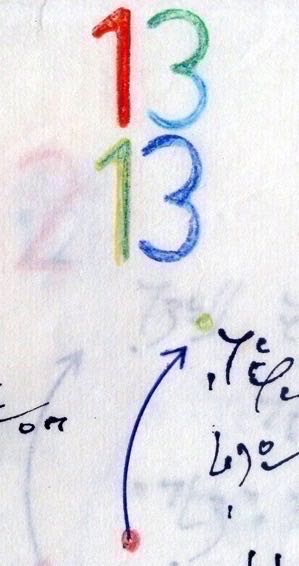
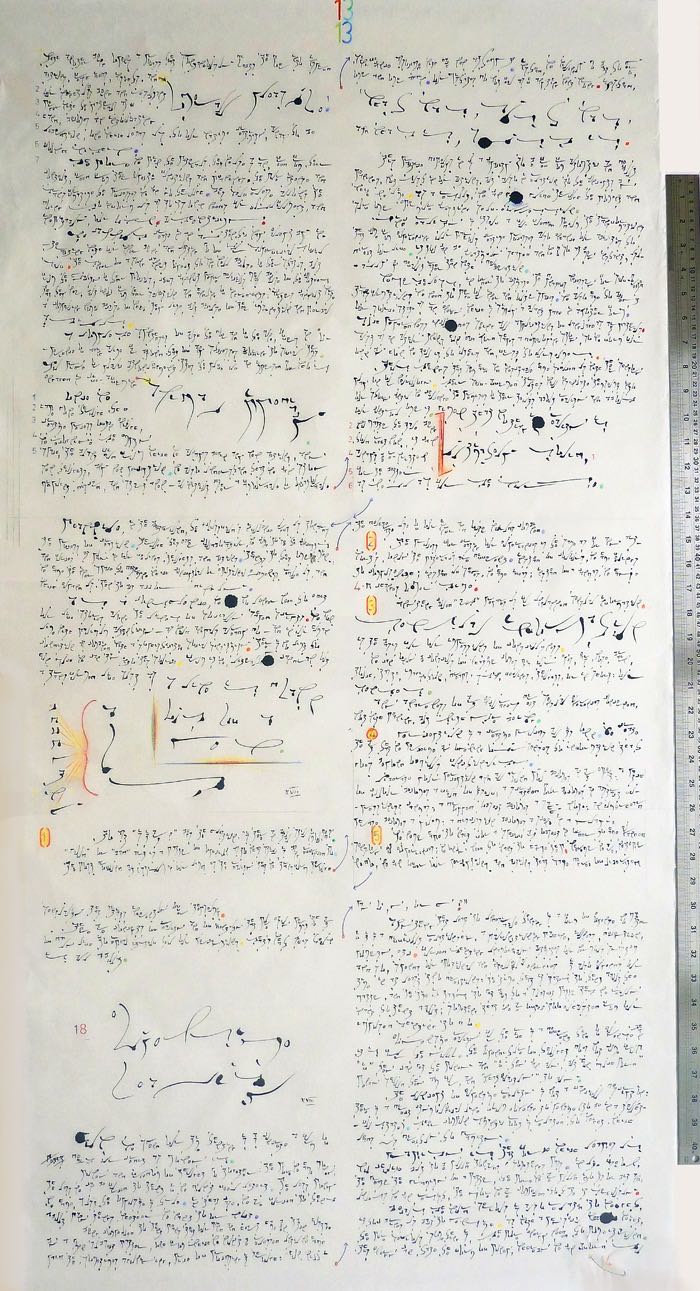
Scroll 13 . 70 x 135 cm / 27.5 x 53 inches
___________________
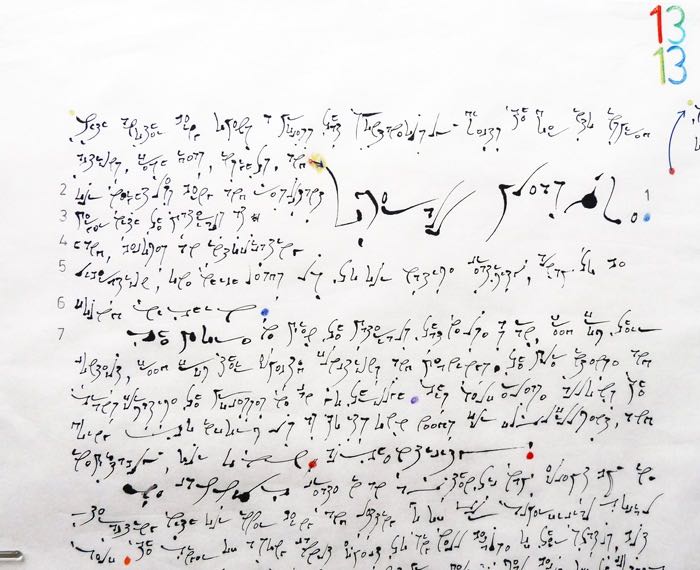
Scroll 13-section 1.1
> with another being opens a process that spontaneously directs the doer into inspired actions, fresh ideas, insights, and overall pleasure. Our weightless being and resultant merger with the materials at hand, becomes an intoxicating liberation that leads us to our native creativity, always to be found within.
The more we view the materials that we use as raw, freed from their context, freed from their expected functions and meanings, the more intense and transformative the processes we can go through. This self-release allows the doing to inform us as to its own needs for fulfillment, and inevitably, our own authenticity.
We cannot create in an authentic way except by interacting with our inner being and letting go of our superficial social self.
________________
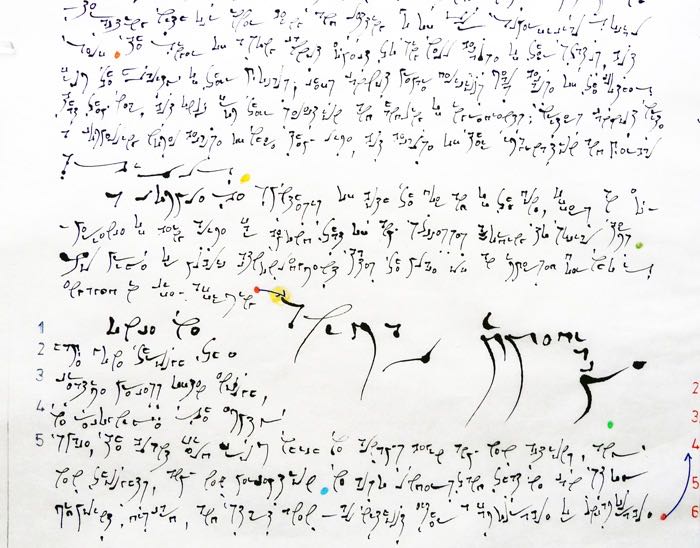
Scroll 13-section 1.2
The singer of a song cannot expect to sing well because of their status, but from the quality of their vocals; chefs cannot prepare delicious meals because of the clothes that they wear, but only from their selection and handling of the ingredients; writers cannot write a compelling novel because of where they live, but because of their imaginations’ contents.
A complete synthesis of both the doer and of the done, offers an experience of being alive far beyond that of any successes according to social terms. No prize or public acknowledgment takes the place of an immersed doer who is engaged in life-affirming animal immediacy.
Once we have gone through the creative process often enough, we recognize the empty space, the blank field from which we always begin any new action, any new thought, any new perception. We also understand that we can stop at midpoint, discard, and start anew—all without either a favourable or unfavourable >
____________

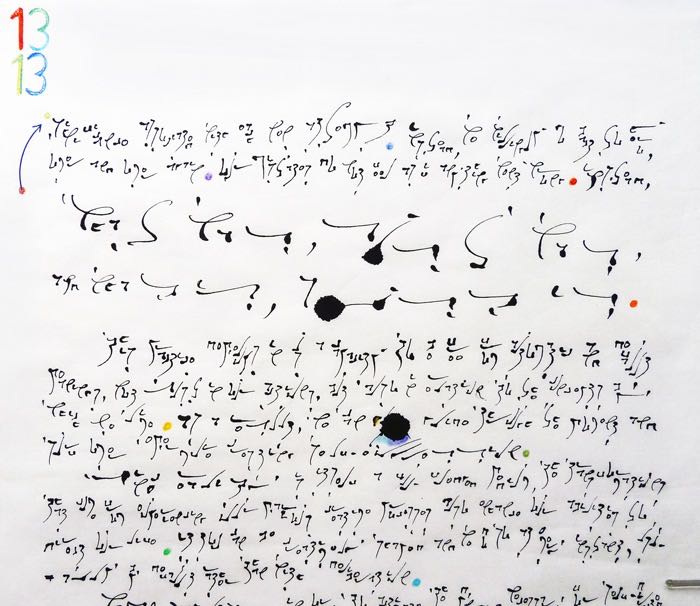
Scroll 13-section 2.1
> significance associated with each new attempt. Instead, we willingly go back to zero, over and over again. Our mistakes do not feel as if anything went wrong. Instead, what was just was, and what is, just is.
This practice develops in us a capacity to be free from automatic and default meanings, not just in our actions, but also in relation to the concepts by which we live. As a result, we can glide through the moment and surf over ever more cresting self-expression.
Since reality is itself a full-fledged medium, the transformations that come from experiencing our various creative processes also enhance our abilities to direct our life. It too can be creatively shaped and we do so at every instant, usually by default rather than with deliberation.
_______________
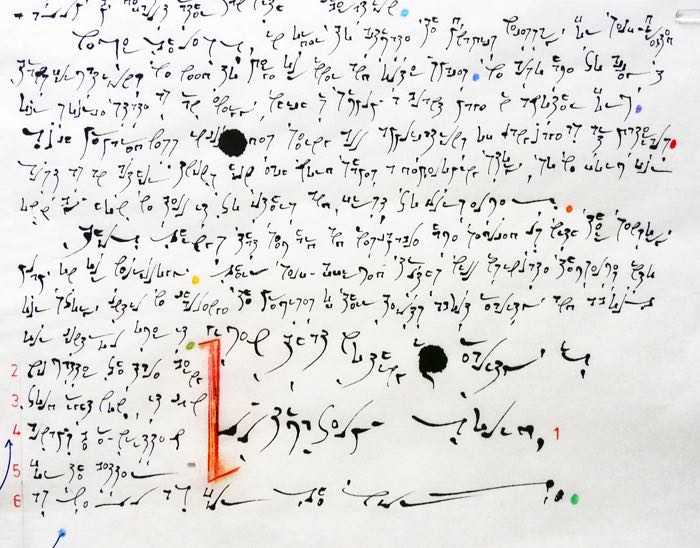
Scroll 13-section 2.2
Nevertheless, in order to activate the dynamics necessary for self-directed transformations we need to merge our inner and outer spaces. We also have to accept our source state as raw energy, which is simply a blank page in another form. Such preparedness includes seeing all applications of language as art materials. Just as an author knows how each word shapes a developing story, so we form our own by how we tell it to others, and first, to ourselves.
Those things that seem hard and inescapable have seduced us with their sensory play on our neurology. Their self-affirmed truths will insinuate themselves into our story until we challenge the premises of their texts about reality and about our control over it. Given that nothing in reality is ultimately solid, no matter the tale being told right now, it can be re-written for the better, as well as for the worse.
_________________
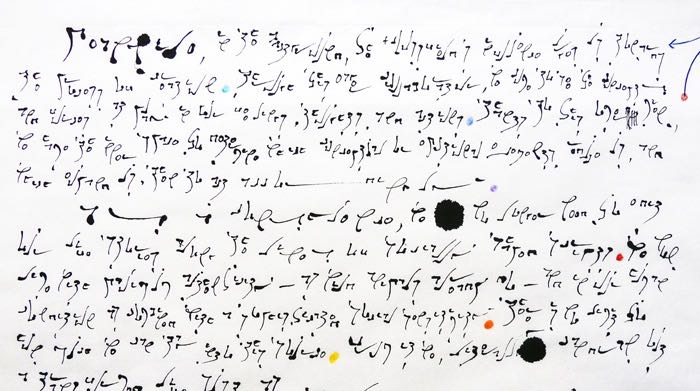
Scroll 13-section 3.1
Meanwhile, in the background, the +crossfield’s influence urges us towards the process of creation. Through this eager collaborator, we come to see the concepts and forces at play in our feelings, our thoughts, and our actions. Thanks to this overview, we have the inner space to determine which conceptual or emotional elements reduce us, and which expand us, then to act accordingly.
As a consequence, we no longer need to edit our life stories along the lines of socially shaped scripts. We now live with maximum authenticity—as wild animals already do—and in our human condition as combined with a sophisticated social sensitivity. There is no limit to how much we can tap into this source.
___________________
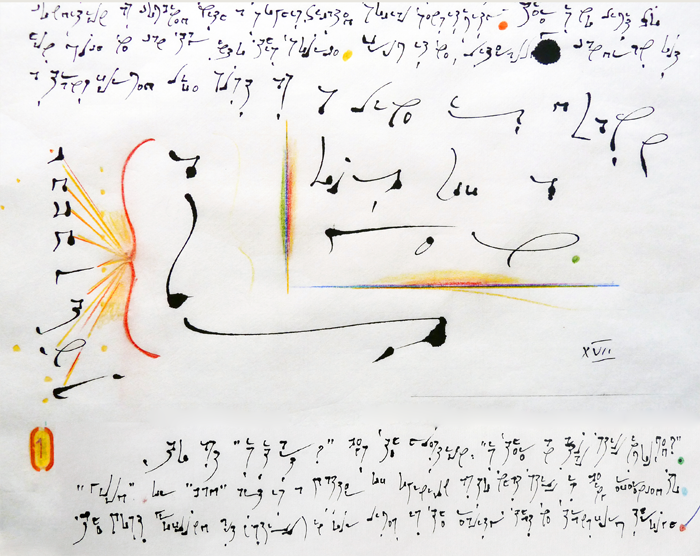
Scroll 13-section 3.2
From it we, literally, can draw out a transformed life just as a line is drawn out of a pen.
17 C / D / F / M / P / T / W / Z /Art
1. To ask “is it art?” begs the question: “Is there an actual skill involved?” “Good” or “bad” art is a matter of opinion as to what skill is being referenced. The most profound art (skill) in our lives is the reality that we transform through >
___________________
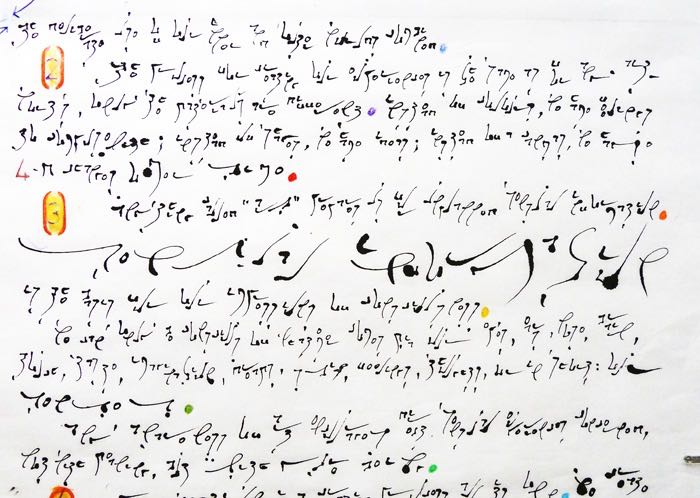
Scroll 13-section 4.1
> the deliberate use of our inner and outer worlds combined.
2. The process for creating our experiences is the same as that for an artwork’s, only the materials are different. Instead of colours, we have feelings to compose with; instead of shapes, we have ideas; instead of a canvas, we have 4-D changes over time.
3. Anything called “art” prepares us for unplanned sensual information. Sensual information is the basis for our impressions of consciousness. We can only be conscious of whatever comes through our eyes, ears, nose, brain, touch, taste, imagination, dreams, skin, feelings, thoughts, or in short: senses. Any awareness of art encourages direct sensual experiences concerned, not with meaning but with being.
__________________
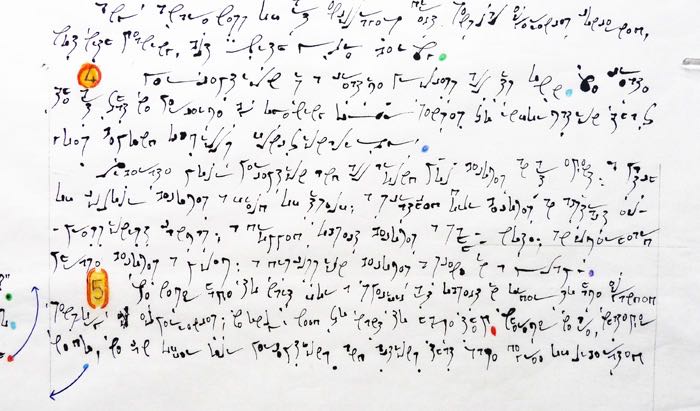
Scroll 13-section 4.2
4. Perception is a creative process all its own. We create the art that we perceive by opening our senses to information that goes beyond obvious functionality. Liberate your perception and all around you becomes an art event: a patch of colour becomes a colour field painting; a scratched door becomes an abstract expressionist canvas; a dropped object becomes a jazz note; an overheard phrase becomes a poem, a discus-sion becomes a scene in a play.
5. We never have to wait for a specific art object in order to have expanded sensory experiences; we only need to want to have them. Wherever we are, whatever we do, we can offer our perceptions and the same degree of liberated >
__________________
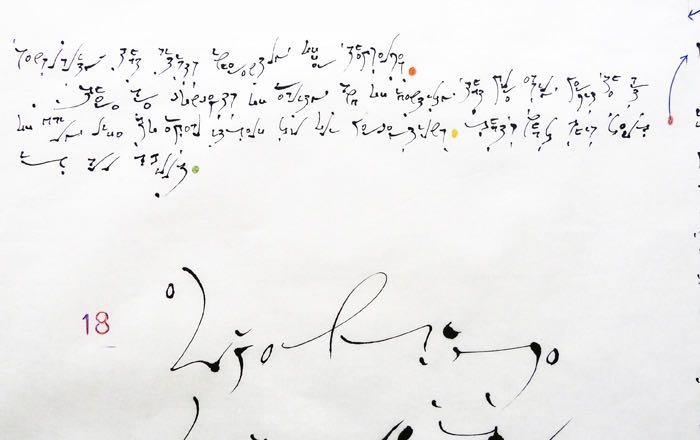
Scroll 13-section 5.1
> sensuality that artists inherently offer themselves.
There are concepts of reality and of identity that more easily permit the art of daily life to reveal itself to our perceptions. That’s what this text is all about.
___________________
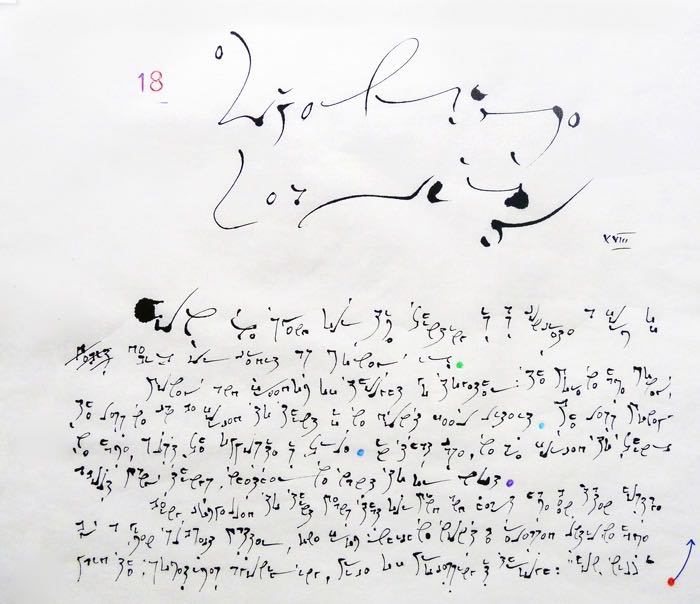
Scroll 13-section 5.2
18 Expensive Reality
How we spend our time thinking is as concrete a form of debit or credit as money is.
Money and freedom of thought go together: the more we have money, the less we can be forced to think if we don’t feel like it. The less money we have, just the opposite is true. In that
case, we are forced to think about many things, whether we want to or not.
Being compelled to think means that our mind has been taken hostage by a given subject matter, one from which we won’t be released until we have paid the often agonizing price of processing it through: “How will I >
_______________
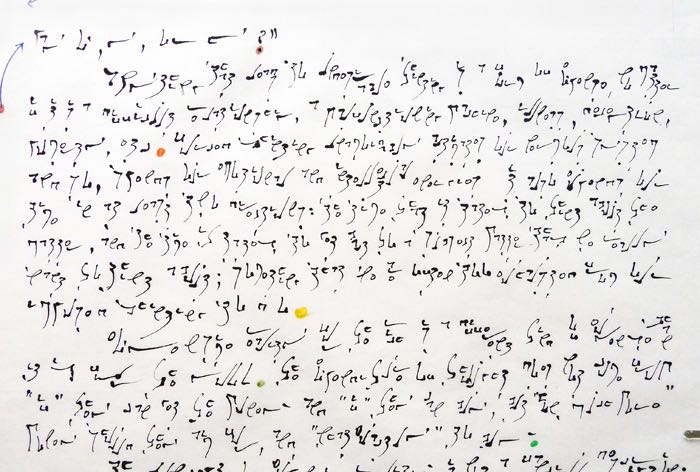
Scroll 13-section 6.1
> pay the X, Y, or Z?”
Anything that leads to undesirable thinking is a form of expense, no matter if it is a difficult relationship, a malfunctioning machine, illness, deception, poverty, etc. Forced thinking unavoidably activates our nervous system and so, spends our emotional and intellectual energies. It also expends our time in at least two directions: the time that it takes to think about the matter, and the time it takes to get back to a subject that we really want to think about; something that we are often too exhausted from our imposed thinking to do.
Expensive reality for the rich is a different kind of expense than it is for the poor. The expenditure of thought does not come from “if” they can get the money and “if” they can buy, but “how much more” money should they aim for, and “what exactly” to buy.
__________________
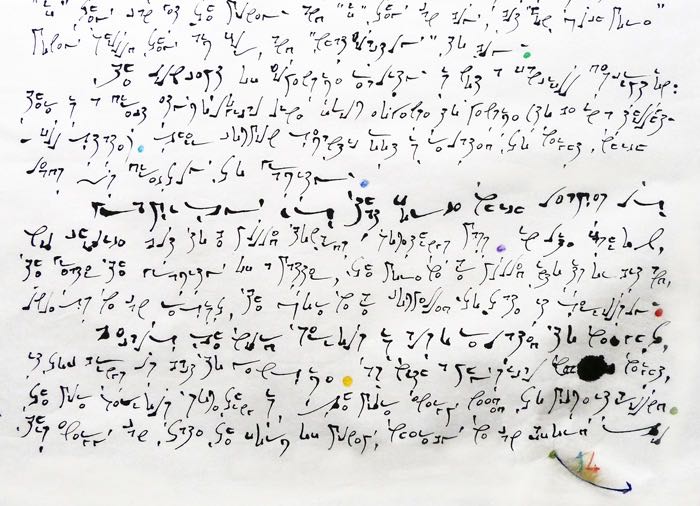
Scroll 13-section 6.2 — End of Scroll 13
The concept of expensive reality is not a fanciful description; there is a direct etymological line from expense to pensive—to be in a thoughtful state. Their common semantic root is related to weight, which leads us directly to gravity.
Gravity is that force which leaves us no choice but to be pulled towards something’s mass. In like fashion, the greater the gravity of a matter, the more we are pulled into its orbit and, unless we can resist, the more we are compelled to take it seriously.
Because the word serious is also etymologically related to weight, it too brings us back to pensive. As with a physical weight, the more serious something is, the more energy needed to move it around. This energy can take the form of money, whereby we can afford to >
< Scroll 12 ____________________________________________________ Scroll 14 >
Scrolls: 1 . 2a . 2b . 3 . 4 . 5 . 6 . 7 . 8 . 9 . 10 . 11 . 12 . 13 . 14 . 15 . 16 . 17 .
18 . 19 . 20 . 21 . 22 . 23 . 24 . 25 . 26 . 27 . 28 . 29 . 30 . 31 . 32 . 33 . 34 .
Buy HD e-Books & Text —— www.ccelian.com
© C.C. Elian 2010 - 2016